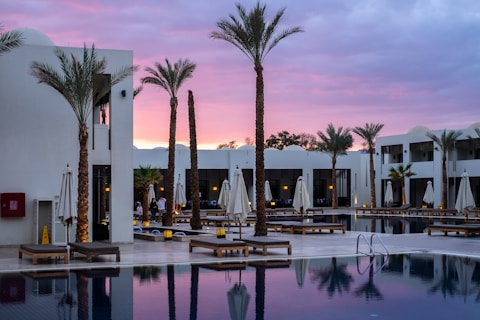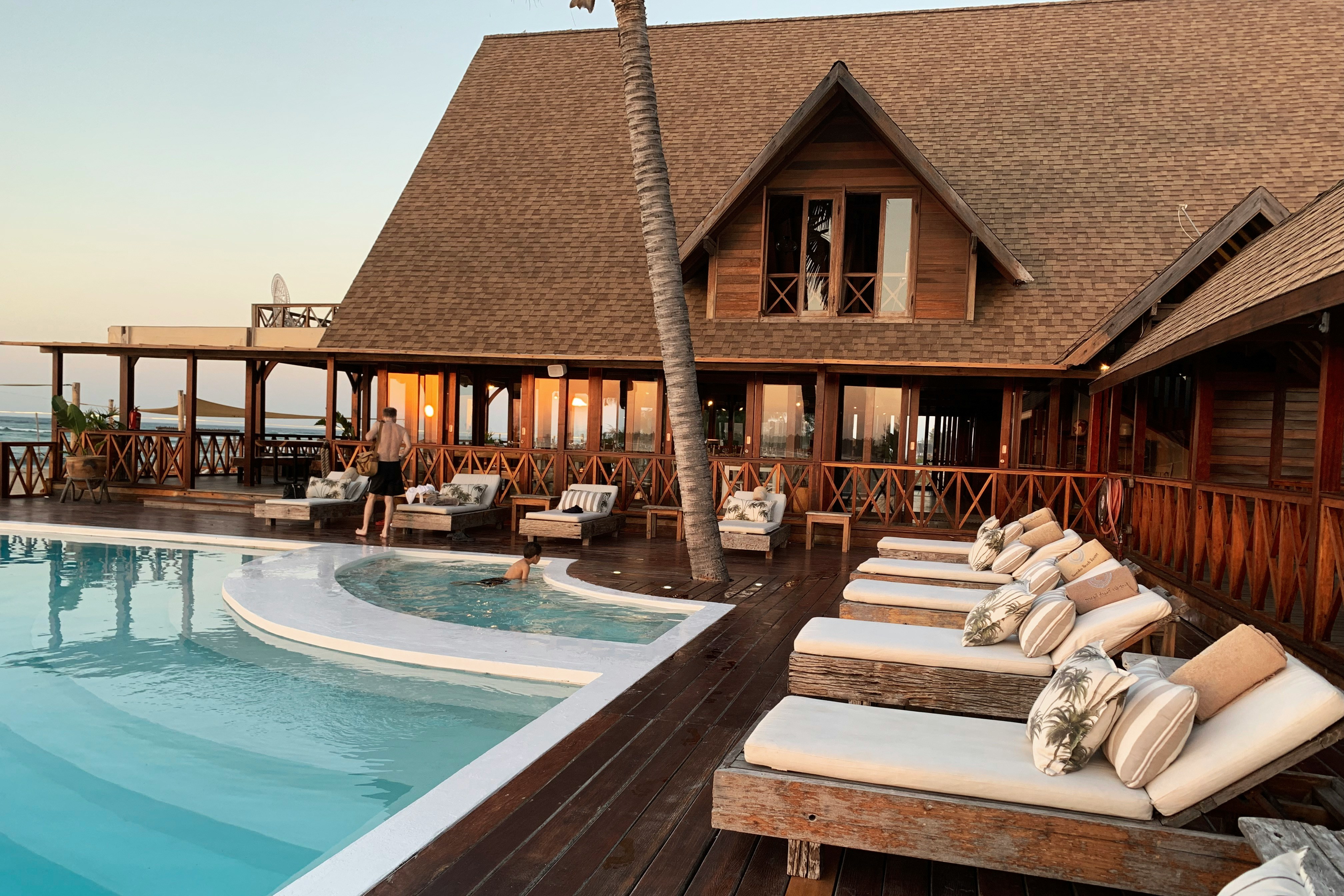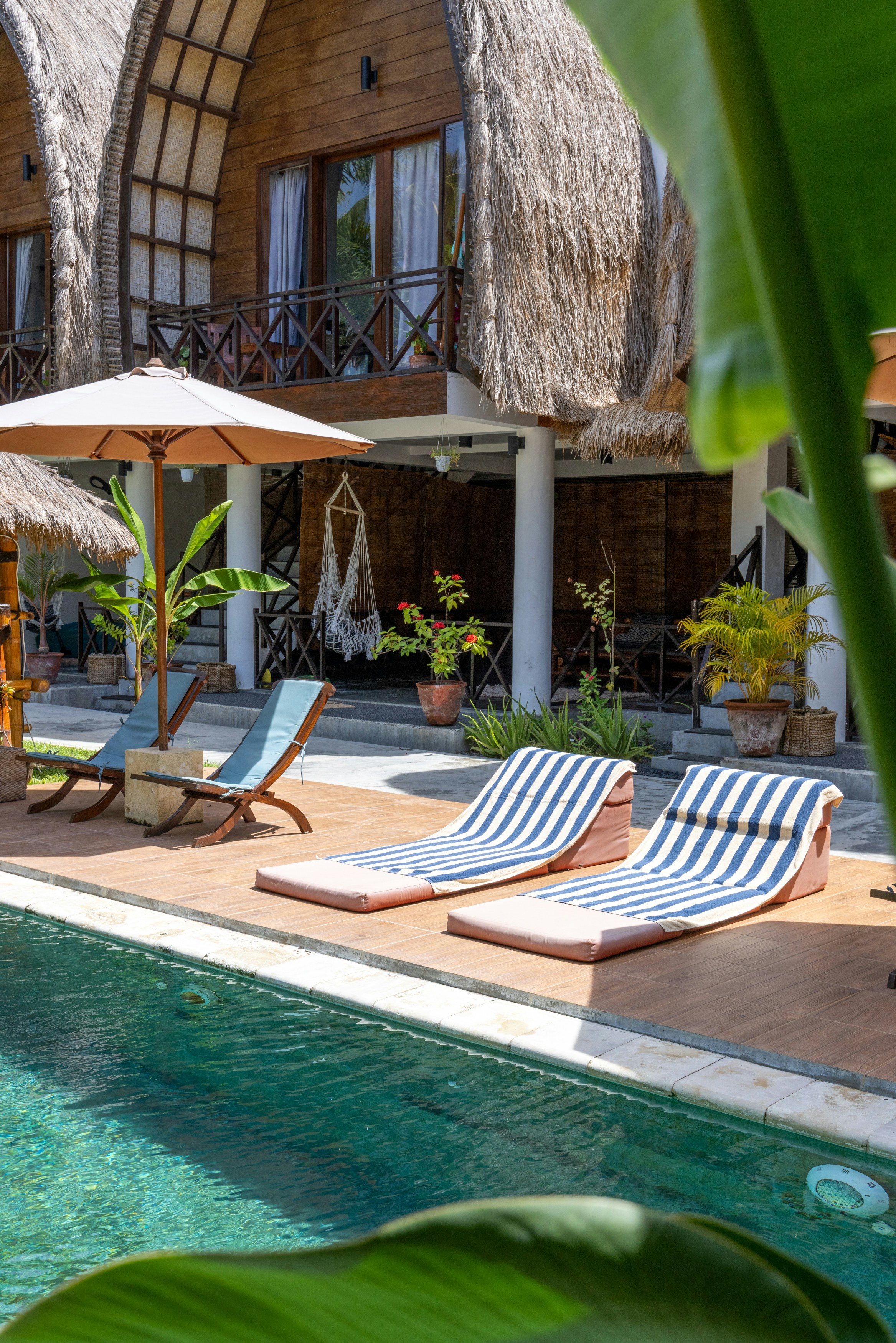Phimeanakas Temple
Phimeanakas Temple things to do, attractions, restaurants, events info and trip planning
Plan your stay
Posts
Phimeanakas Temple, nestled within the grand expanse of Angkor Thom in Siem Reap, offers a glimpse into the spiritual heart of the Khmer Empire. Visiting this temple with my family was a remarkable experience that left us in awe of its historical significance and serene beauty. Unlike the more famous temples like Angkor Wat or Bayon, Phimeanakas is often quieter, allowing visitors to fully immerse themselves in its peaceful ambiance. Climbing its steep, ancient steps, we found ourselves transported back in time, imagining what life must have been like during the reign of the Khmer kings who once walked these grounds. The view from the top, while modest in comparison to some of the larger temples, provided a serene overlook of the surrounding jungle, with towering trees embracing the structure in a timeless embrace. What struck me the most about Phimeanakas was the palpable sense of history. The temple, once part of the royal palace complex, is said to have been a site of great ritual importance. As we explored the stone corridors and admired the intricate carvings, my family and I felt as though we were retracing the steps of Cambodia’s ancient royalty. For those who appreciate quieter, less crowded spots within the Angkor complex, Phimeanakas is a must-visit. It’s a temple that exudes mystery and tranquility, offering a unique and intimate perspective on the grandeur of Angkor Thom. Whether you’re a history enthusiast, a culture lover, or simply looking for a peaceful place to reflect, Phimeanakas Temple will not disappoint.
WanderLensBiker “WanderLensBiker”WanderLensBiker “WanderLensBiker”
00
Phimeanakas is located inside the enclosure of the Royal Palace of Angkor Thom north of Baphuon Phimeanakas can be reached on foot either from Prah Palilay or from the Terrace of the Elephants. Pass through the gap in the south side of the enclosing wall of Prah and walk straight for about 200 meters (656 feet); turn left to the east and right at the first path, then follow it until you reach the temple. Or walk across the Terrace of Elephants at the entrance closest to the Victory Gate road and walk through an entry tower; then follow the path until you reach the temple. The temple of Phimeanakas is situated near the center of the area enclosed by the walls of the Royal Palace. It must originally have been crowned with a golden pinnacle, as Zhou Daguan described it as the Tower of Gold The temple is built of roughly hewn sandstone blocks and has little decoration. According to legend there was a gold tower (Phimeanakas ) inside the royal palace of Angkor the Great where a serpent-spirit with nine heads lived. The spirit appeared to the Khmer king disguised as a woman and the king had to sleep with her every night in the tower before he joined his wives and concubines in another part of the palace. If the king missed even one night it was believed he would die. In this way the royal lineage of the Khmer was perpetuated. Visit to this monument is not allowed due to poor condition of the monument. Hence couldn't describe the interior.
Shankar RajasekharanShankar Rajasekharan
50
Don’t miss: - Lions guard the stairway, - elephants were placed at each corners of the sanctuary - A large cruciform terrace whose edges are supported by columns. - Four sanctuaries facing west (libraries?) Phimeanakas (Prasat Phimean Akas, 'celestial temple') or Vimeanakas (Prasat Vimean Akas) at Angkor, Cambodia, is a Hindu temple in the Khleang style, built at the end of the 10th century. The tower was originally crowned with a golden pinnacle, as Zhou Daguan described it in his report. According to legend, the king spent the first watch of every night with a woman thought to represent a Nāga in the tower, during that time, not even the queen was permitted to intrude. Only in the second watch the king returned to his palace with the queen. You can reach Phimeanakas on foot from Baphuon in the south, Terrace of the Elephants in the East, or Preah Palilay in the north. Most visitors will approach the temple from the East as the Angkor kings would have done. As you’re walking from the Terrace of the Elephants, keep going for around 200m. There is a path through the trees which will take you to the front of the temple.
DivertimentoDivertimento
10
Le Phiméanakas ("char céleste" en khmer) est un temple hindouiste dans l'enceinte du palais royal de l'ancienne ville d'Angkor Thom sur le site d'Angkor. Il a été bâti sous le règne de Rājendravarman II (entre 941-968). Lors de l'édification de son palais royal (vers 1040) Sūryavarman Ier le reconstruit sous la forme d'une pyramide qui lui servait probablement de temple particulier. Il fut appelé la « Tour d'or » par Zhou Daguan (Tchéou Ta-Kouan). De ce temple d'environ 35 m sur 28 m à la base restent les trois premiers étages massifs, construits en blocs de latérite, sobrement décorés de lions et d'éléphants à chaque coin. Des escaliers extrêmement raides mènent à une terrasse supérieure de 30 m par 23 m d'où la vue est superbe sur le Baphûon voisin. Les niveaux supérieurs, élevés sur un plan cruciforme, sont en grande partie effondrés. Il faut y noter les restes d'une galerie couverte qui courait sur tout le périmètre, une première à Angkor. Le temple était la demeure du roi où, dit-on, il s'unissait avec une déesse protectrice qui abandonnait la nuit son corps de serpent pour celui d'une belle jeune femme. Au Nord du temple, à quelques dizaines de mètres, se trouve le Sras Srei, un bassin rectangulaire vraisemblablement utilisé par les rois pour des ablutions rituelles et peut-être des spectacles nautiques. Une inscription suggère qu'il était réservé aux hommes, un autre bassin plus petit situé à l'Est du Sras Srei, étant destiné aux épouses, concubines et personnages féminins de la cour royale. Phimeanakas ('celestial temple') at Angkor, Cambodia, is a Hindu temple in the Khleang style, built at the end of the 10th century, during the reign of Rajendravarman (from 941-968), then completed by Suryavarman I in the shape of a three tier pyramid as a Hindu temple. On top of the pyramid there was a tower, while on the edge of top platform there are galleries. Phimeanakas is located inside the walled enclosure of the Royal Palace of Angkor Thom north of Baphuon. The temple was the focal point of Suryavarman I's capital. The buildings there from his reign are enclosed by a wall 600 by 250 m, with five gopuram, and include the Southern and Northern Khleangs. The tower must originally have been crowned with a golden pinnacle, as Zhou Daguan described it in his report. According to legend, the king spent the first watch of every night with a woman thought to represent a Nāga in the tower, during that time, not even the queen was permitted to intrude. Only in the second watch the king returned to his palace with the queen. If the naga who was the supreme land owner of Khmer land did not show up for a night, the king's day would be numbered, if the king did not show up, calamity would strike his land. One of the stele states Jayavarman VII, while on a military expedition in Champa, learned that his father Dharanindravarman II had died, and "returned in great haste to aid King Yasovarman II. Jayavarman's second wife, Indradevi, "...composed in impeccable Sanskrit the inscription...panegyric of her sister" Jayarajadevi, which included biographical detail of Jayavarman VII.
Yves Jacques (Ban Houay Hay Lao P.D.R.)Yves Jacques (Ban Houay Hay Lao P.D.R.)
00
Phimeanakas was built at the end of the 10th century by King Rajendravarman and completed by King Suryavarman I. It was built as a Hindu temple in the Khleang style inside the Royal Palace of Angkor Thom. It’s believed that an earlier structure was built here in the early part of the 10th century and knocked down to make way for Phimeanakas. There is an inscription which as been dated to 910 AD and mentions a structure which was dedicated to Vishnu. It was believed that the Naga (a nine headed serpent) lived in the Golden Tower. Each night, the Naga would take the form of a woman. The king would lay with the woman every night and nobody was allowed to enter during this time. It was said that if the king failed to arrive one evening, then a great disaster would befall his kingdom. If the Naga failed to appear, then the king’s days were numbered and he would die.
Jonathan WeaverJonathan Weaver
10
This temple has an interesting look and shape to it, kind of reminiscent of Koh Ker (which in turn is reminiscent of Chichen Itza). It also has an interesting history and is much older than most of the other temples in Angkor Thom. Visually it isn't as impressive as some of its nearby neighbors, but it is surrounded by other spots that are also worth seeing like Bahpuon, Preah Palilay, the Terrace of the Elephant, Leper King Terrace, etc. Also there is a nice forested walk that goes behind many of these temples which is much more comfortable than the scorching sun near the main road. Not exactly a must see, but if you have more than 3 days in Siem Reap, this should probably be on your list.
Gunnar CayaGunnar Caya
00
Nearby Attractions Of Phimeanakas Temple
Bayon Temple
Bayon Temple
Terrace of the Elephants
Baphuon Temple
Baphuon Temple
Preah Ponlea Sdach Komlong (Terrace Of The Leper King)
Prasat Preah Palilay
Suor Prat Tower
Prasat Preah Pithu Group
Prasat Khleang Khang Cheung (Prasat North Khleang)

Bayon Temple
4.8
(5.1K)Click for details

Bayon Temple
4.8
(4.1K)Click for details

Terrace of the Elephants
4.5
(936)Click for details

Baphuon Temple
4.7
(943)Click for details
Basic Info
Address
CVW4+8F7, Angkor, Cambodia
Map
Reviews
Overview
4.4
(245 reviews)
Ratings & Description
cultural
outdoor
family friendly
Description
Phimeanakas or Vimeanakas at Angkor, Cambodia, is a Hindu temple in the Khleang style, built at the end of the 10th century, during the reign of Rajendravarman, then completed by Suryavarman I in the shape of a three tier pyramid as a Hindu temple.
attractions: Bayon Temple, Bayon Temple, Terrace of the Elephants, Baphuon Temple, Baphuon Temple, Preah Ponlea Sdach Komlong (Terrace Of The Leper King), Prasat Preah Palilay, Suor Prat Tower, Prasat Preah Pithu Group, Prasat Khleang Khang Cheung (Prasat North Khleang), restaurants:





